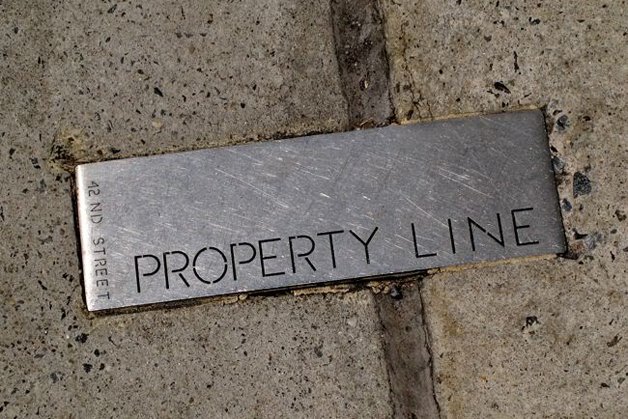
In the sea of pavement and concrete that is downtown Toronto, it can sometimes be impossible to tell what’s private and what’s public property.
That can cause problems, as was made clear earlier this month when overzealous security guards were found to be habitually removing bicycles from a TTC pole at Yonge and Bloor. Brookfield Property Partners, which owns the nearby Hudson’s Bay Centre, had been cutting bike locks off the pole under the impression it was on their property. It turned out to be city land.
On Tuesday, in the midst of a marathon voting session, council approved a motion that could help avoid mix-ups like the Brookfield bike-snatching. The motion, drafted by Councillor Kristyn Wong-Tam, requested that city staff study installing visual aids to mark the property line on busy commercial streets. It passed 34-3.
Wong-Tam says she brought the issue to council partly in response to the Brookfield controversy, which took place in her ward. But in her four years representing a busy downtown area, she’s seen other conflicts arise as a result of vague property markings, including vendors staking out space in front of their stores and media being shooed off public sidewalks.
“Very few people can see what is private and what is public. Even the property owners sometimes may not know,” Wong-Tam says. “It would certainly make it a lot simpler for someone… to be able to point to a line in the ground and say, ‘This is where you’re supposed to be.'”
For inspiration, Wong-Tam’s motion suggests Toronto look to New York City, where “elegant bronze plates or visually discreet, thin bronze and granite bands” sometimes mark the property line.
Wong-Tam says that the markers shouldn’t be mandatory in Toronto, but could be installed for any property owners who want them. City staff will report back on the issue in early 2015.
Stephen Young, president of the Toronto Public Space Initiative, says the pavement markers could have both good and bad effects.
“Anything that makes public space more visible is a good thing,” he says. But the flip side is that “we will realize that a lot of space we think is public space, actually isn’t.”
Young says in the last few decades the city hasn’t invested in new public space, and instead has relied on private developers to provide privately-owned, publicly-accessible areas (POPS, for short)-spaces that look like public parks or squares but are actually private property. According to a 2013 city report, there could be as many as 400 POPS throughout Toronto, and this summer the city started marking and mapping them to make them more visible to residents.
Lisa Ferguson, the cyclist who publicly complained when Brookfield cut the lock off her ride, says a pavement marker might have helped settle her dispute with the company right away. Even though it turned out she had locked her bike to public property, Ferguson wasn’t initially sure who was in the right.
“I think that most citizens wouldn’t know that any part of the sidewalk is owned by a private corporation. If they could make that better known that would be helpful,” she says.
Although her spat with the company was ultimately resolved-Brookfield returned her bike on the spot and after the story hit the media, the company offered to reimburse her $139 plus taxes for her lock-she says she feels bad for other cyclists who may have locked their bike to the same TTC pole and don’t know that their rides were unfairly confiscated.
“This wasn’t about money to me,” she says. “This was about private corporations thinking that they have the right to police public space.”
bens@nowtoronto.com | @BenSpurr












